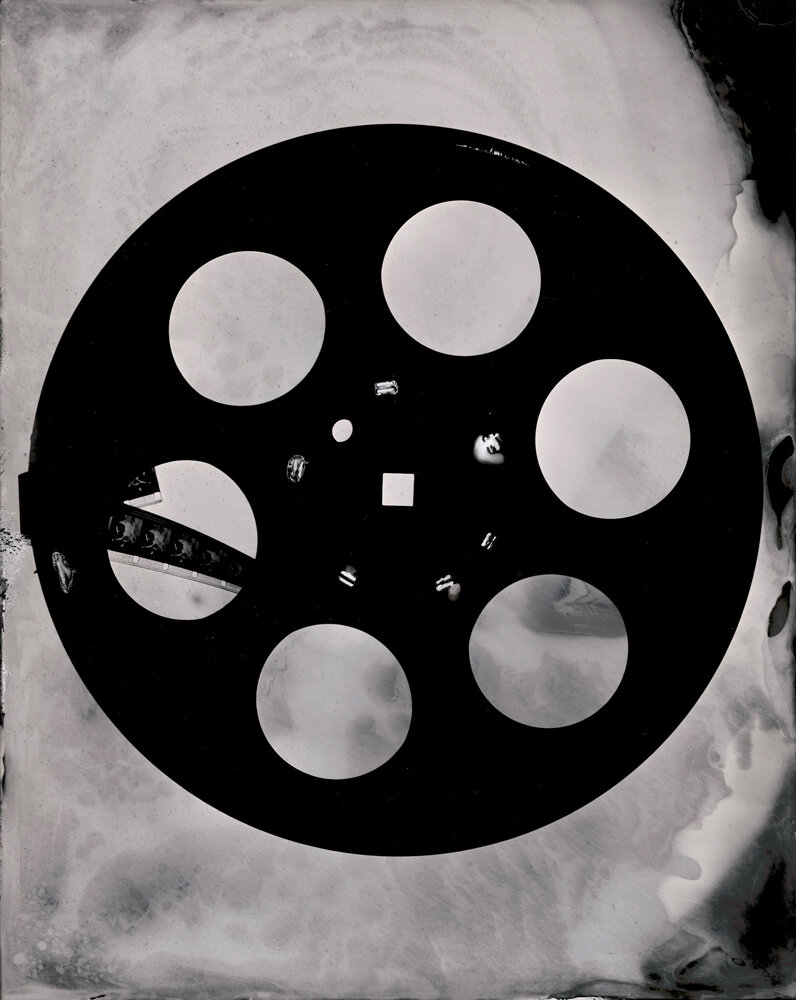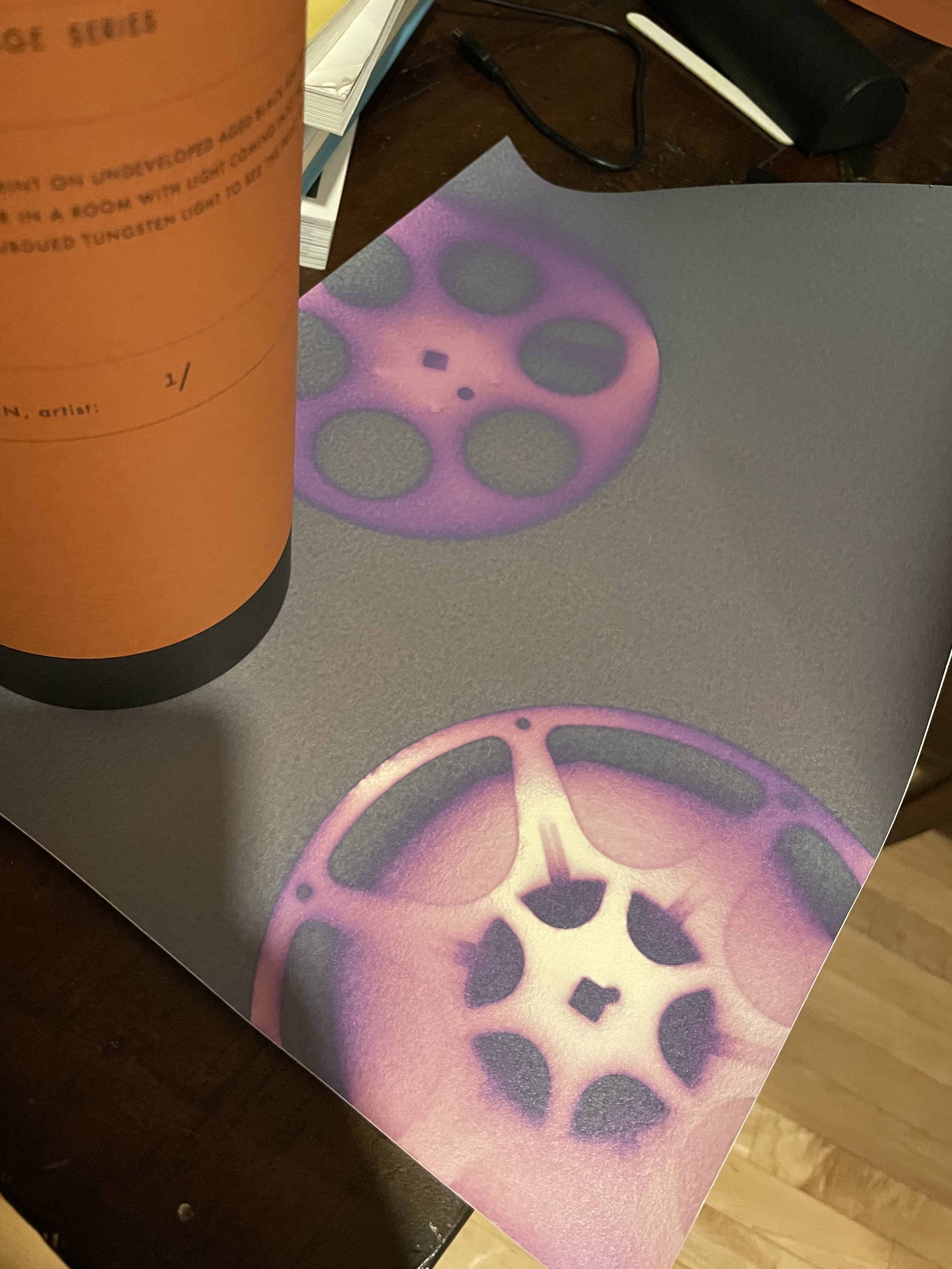The Infinite Latent Image Series
This work is inspired by my professor who had a latent ‘printing out paper’ print in a drawer. Printing out paper was paper that was used to proof images. It was never fixed and so was always sensitive to light. For each alternative process class he allowed us to open the drawer and look at it.
It was his way of demonstrating what a latent image is. A latent image is an image that is there btu not there – the image has been formed but not fixed to make the print resistant to light. A latent image could be images that have been exposed onto film but the film has not been developed yet (or developed and not fixed), or an image that has been exposed with light on to paper and not fixed yet.
In the photographic art community there has been a lot of new work recently that contends with chemical photography. This work is about the idea of the latent image resisting being looked at.
As an image, that is sensitive to light (a lumen print), it is destroyed a little every time someone looks at it. As such it can be interpreted as going against Instagram and social media. In social media images are clamoring for our attention, wanting to be seen and liked 1000;s of times. This image in the tube RESTRICTS how much it is viewed - in fact only a collector who owns it or a very enthusiastic gallery visitor may occasionally glance at it’s beautiful latent lumen colors, perhaps after dinner for 10 seconds.
This is a conceptual project and as such is not (only) using aesthetics as a measure of it’s artistic success, but mainly exists as the idea and also as a tribute to chemical photography with which I grew up. The tube furthermore consciously emulates Piero Manzoni’s infinite line project from the 1960’s in which he created an infinite line. It is also inspired by Noam M Elcott’s book about the history of (photographic and other) Artificial Darkness.
Pls tag: @rebeccahackemann on Instagram.
Dimensions
20” x 5” cylinder, light tight cardboard
Year
2022, ed. 20, 1 artist copy







